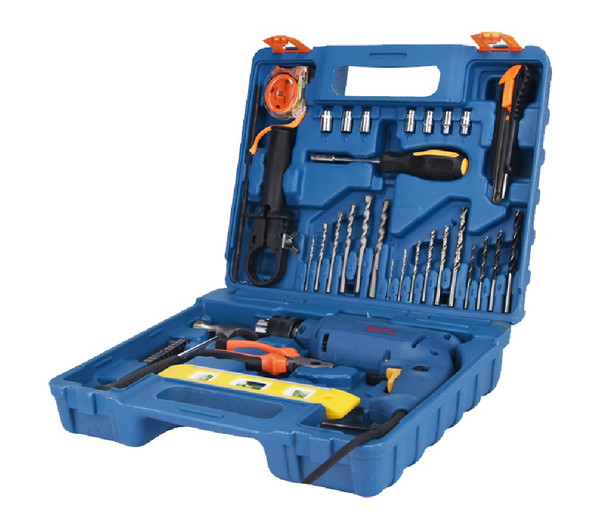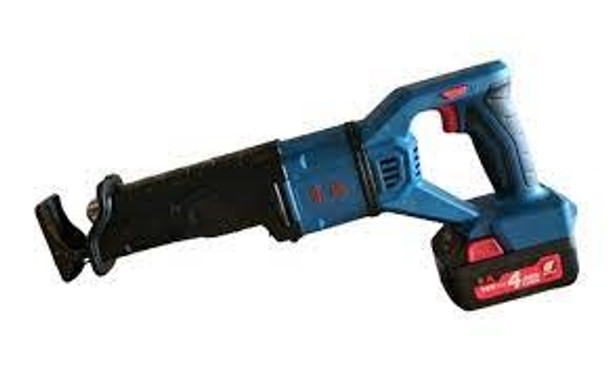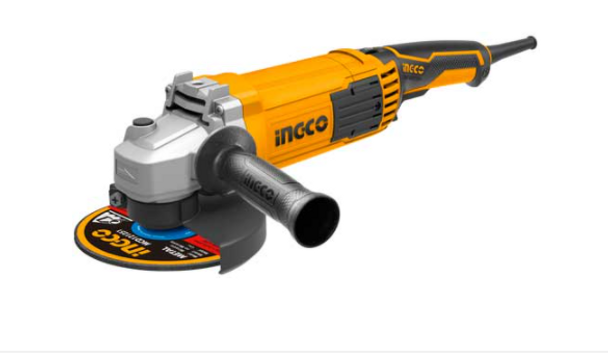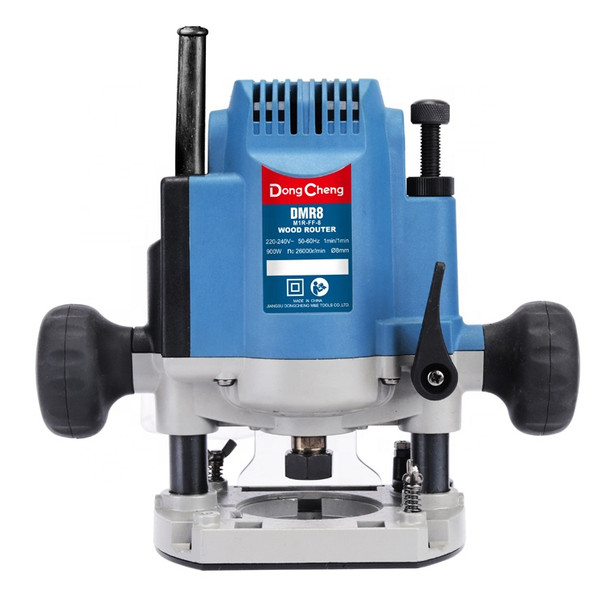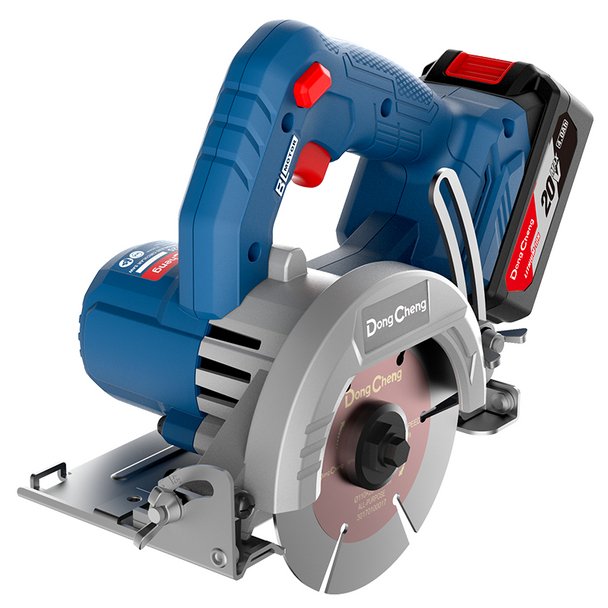Choosing the Right Power Tools for Heavy-Duty Industrial Tasks
Industrial power tools play a crucial role in heavy-duty tasks across various industries. These tools are designed to handle demanding applications, providing the power, performance, and durability necessary to tackle tough jobs. Whether it's construction, manufacturing, metalworking, or any other field that involves heavy-duty tasks, having the right industrial power tools is essential for efficiency, productivity, and safety. The importance of choosing the right power tools cannot be overstated when tackling these rigorous applications. Each task demands a specific set of features, capabilities, and durability from your tools, and making the wrong choice can lead to inefficiency, increased downtime, and potential safety risks.
Buy Online... DongCheng Electrical Impact Drill (Tool Kit) DZJ 04-13
Industrial power tools are specifically engineered to handle the rigors of demanding work environments. They are built to withstand continuous use, heavy loads, and challenging materials. These tools are known for their robust construction, high-performance motors, and advanced features, making them reliable workhorses in industrial settings. Examples of industrial power tools include Power saws, Power grinders, Power sanders etc.
This guide is not just about selecting tools; it's about emphasizing the critical need to choose the right power tools. As we navigate through the complexities of heavy-duty tasks, we'll underscore how the right tools not only enhance productivity but also contribute to the longevity of machinery and the safety of your workforce. Let's delve into the world of precision and power, understanding why the right tools are the backbone of every successful heavy-duty endeavor.
Understanding Industrial Power Tools
Industrial power tools are robust, heavy-duty devices designed to perform high-demand tasks in various industrial settings. These tools are typically powered by either electric motors, compressed air, or internal combustion engines, making them more potent than standard hand tools.They are also built to withstand rigorous use, delivering consistent performance and precision in handling large-scale projects. Characteristics that define industrial-grade power tools include:
- Durability: Industrial tools are constructed with high-quality materials, ensuring they can endure prolonged use and challenging working conditions without compromising performance.
- Power and Performance: These tools boast high-power motors or engines, enabling them to handle heavy-duty tasks with ease. They often deliver superior torque, speed, and cutting force compared to standard tools.
- Precision and Reliability: Industrial power tools are engineered for accuracy and reliability, vital in industries where precision is paramount. They offer consistent performance even in demanding environments.
- Adaptability: Many industrial tools come with interchangeable parts or accessories, allowing users to adapt them for different applications, enhancing their versatility.
- Safety Features: Due to the potentially hazardous nature of industrial tasks, these tools often incorporate advanced safety mechanisms to protect operators from accidents and injuries.
Types of Industrial Power Tools
There are several types of industrial power tools, each suited for specific tasks and industries. Some of the common types include:
- Drills and Drivers: Used for making holes or driving fasteners, available in various sizes and power capacities.
- Saws: Including circular saws, band saws, and reciprocating saws, designed to cut through metal, wood, and other materials.
- Grinders: Used for cutting, grinding, and polishing surfaces, especially in metalworking.
- Sanders: Ideal for smoothing surfaces and removing material quickly.
- Welding Machines: Essential for joining metal parts in construction and manufacturing.
- Pneumatic Tools: Such as impact wrenches and hammers, which use compressed air for high-power output.
Each type of tool comes with its own set of features and attachments, making them versatile and indispensable in industrial operations.
Buy Online... DongCheng Cordless Reciprocating Saw 28mm, 18V/4AHx2 DCJF28EK
Factors to Consider
1. Power and Performance
When selecting industrial power tools, power and performance are critical. The tool’s power rating, often measured in watts or horsepower, should align with the demands of the task. Higher wattage and horsepower often correlates with increased power output, allowing the tool to handle heavier workloads more efficiently. Also, high-performance tools ensure efficient operation, reduced work time, and the ability to tackle tougher materials. Consider tools with adjustable power settings to provide versatility across different tasks. Finally, evaluate how the tool maintains its performance under load without compromising efficiency, especially during prolonged use.
2. Durability and Construction
The durability of power tools is determined by their construction. Tools built with high-quality materials such as reinforced steel or aluminum casings can withstand the rigors of industrial use. Look for tools with solid construction and protective features like overload protection and safety switches, which contribute to their longevity and user safety. Opt for tools specifically designed to withstand industrial environments, which might include resistance to dust, moisture, or vibration. Ultimately, consider reputable brands known for producing durable and reliable industrial tools. Reviews and testimonials from other industrial users can provide insights into the tool's longevity and build quality.
3. Specific Features for Task Requirements
Finally, consider the specific features that cater to the task requirements. Some of the the things to look out for includes:
- Speed Control: For precision tasks that require varying speeds.
- Torque Settings: Essential for tasks that need specific torque levels.
- Battery Life: For cordless tools, long battery life is crucial for uninterrupted work.
- Ergonomic Design: Reduces strain and increases comfort during extended use.
- Dust Management Systems: Keep the work environment clean and protect the tool’s internal components.
- Tool Versatility: Some tools offer interchangeable parts or accessories, allowing them to perform various functions, thus increasing their utility.
- Safety Features: Features such as blade guards, auto-locking switches, or ergonomic designs contribute to operator safety.
Common Industrial Power Tools
Power Saws
Power saws are indispensable in industrial settings for cutting through a variety of materials with precision and speed. Common types include:
- Circular Saws: Known for their versatility and straight or beveled cuts in wood, plastic, and metal sheets.
- Band Saws: Excellent for uniform cutting and handling larger workpieces. Favored in woodworking, metalworking, and lumbering industries.
- Chop Saws: Ideal for making quick, accurate crosscuts in metal or wood.
- Jigsaws: Allow for intricate cutting patterns and curves.
- Reciprocating Saws: Known for their back-and-forth cutting motion, these saws are essential for demolition work, cutting through pipes, wood, and even metal.
Power Grinders
Power grinders are used for cutting, grinding, and polishing surfaces. They come in different forms:
- Angle Grinders: Perfect for cutting and grinding metal or masonry.
- Bench Grinders: Typically stationary, used for sharpening tools and shaping metal.
- Die Grinders: Used for more detailed work such as engraving or finishing.
Power Drills
Power drills are essential for creating holes and driving fasteners. They vary in size and power, with some common types being:
- Hammer Drills: Combine drilling with a hammering action for concrete or masonry.
- Impact Drills: Provide high torque for driving screws and bolts.
- Rotary Drills: Offer high-speed rotation for drilling into various materials and can accommodate various drill bits for different applications.
Other Essential Tools:
Other essential industrial power tools include:
- Pneumatic Tools: Including impact wrenches, nail guns, and air-powered drills, these tools are powered by compressed air and are favored for their high power-to-weight ratio.
- Welding Equipment: Industrial welding tools like arc welders, MIG welders, and TIG welders are crucial for joining metals in various industrial processes, offering different techniques for different materials.
- Sanders: Industrial sanders, such as belt sanders and orbital sanders, are vital for smoothing and finishing surfaces in woodworking, metalworking, and automotive industries.
Each tool plays a vital role in industrial operations, and understanding their applications can lead to more informed decisions when equipping your workspace.
Buy Online... 5'' Angle grinder AG150018 INGCO
Matching Tools to Tasks
Selecting the appropriate tool for a specific task is crucial for efficiency and effectiveness in industrial settings. Each tool is designed with particular functions in mind, and using them correctly can enhance work quality and safety. Here are some examples:
- Circular Saws: Ideal for quick, straight cuts in wood during framing or cabinetry work.
- Impact Wrenches: Perfect for assembling heavy machinery where high torque is needed to secure large bolts.
- Rotary Drills: The go-to tool for creating precise holes in concrete for anchor bolts or rebar.
- Angle Grinders: Used in metal fabrication shops for cutting, grinding, and polishing metal components.
- Jigsaws: Suitable for craftsmen who require intricate cutting patterns in wood or metal.
- Hammer Drills: Necessary for electricians and plumbers to drill into masonry to run wiring or piping.
- Pneumatic Nail Guns: Essential for roofers and carpenters for fast and consistent nailing on large projects.
- Orbital Sanders: Used by furniture makers for fine finishing and achieving a smooth surface on wooden pieces.
Case Studies on Tool Selection for Specific Tasks:
Case studies can provide valuable insights into the practical application of tool selection. Here are a couple of examples:
- Metal Fabrication: In a metal fabrication workshop, selecting the appropriate cutting tool is critical. For instance, using an angle grinder with a metal cutting disc for shaping and cutting metal sheets or utilizing a band saw for precise cuts in thicker metal bars.
- Woodworking Projects: In woodworking, the selection of saws is pivotal. A circular saw might be preferred for making straight cuts in plywood or boards, while a band saw could be chosen for intricate curved cuts in hardwood.
- Construction Site Tasks: On a construction site, tasks involving concrete drilling would necessitate the use of a hammer drill or a rotary hammer equipped with masonry bits for efficient drilling into concrete or brick walls.
- Automotive Repair: In an automotive repair shop, pneumatic tools such as impact wrenches are indispensable for swiftly removing stubborn bolts or nuts, increasing productivity and minimizing effort.
Safety Considerations
Safety is paramount in industrial environments, especially when dealing with heavy-duty tasks. The use of industrial power tools comes with inherent risks, and accidents can lead to serious injuries or even fatalities that can result in costly downtime, worker compensation claims, and loss of productivity. Therefore, it’s essential to prioritize safety to protect workers and ensure a secure workplace. This includes proper training, adherence to safety protocols, and the use of personal protective equipment (PPE).
Choosing Tools with Safety Features
When selecting power tools for industrial use, it’s crucial to consider tools equipped with safety features. These may include:
- Automatic Shut-Off: Tools that automatically power down in case of an overload or jam.
- Safety Guards: Protective barriers that prevent accidental contact with moving parts.
- Anti-Vibration Features: Reduce the risk of vibration-related injuries during prolonged use.
- Emergency Stop Controls: Allow for immediate shutdown of the tool in case of an emergency.
- Lock-Off Switches: Prevent accidental start-up of the tool.
- Ergonomic Design: Tools with ergonomic designs minimize strain on the operator's body, reducing the risk of musculoskeletal injuries during prolonged use.
- Personal Protective Equipment (PPE) Compatibility: Ensure that the chosen tools complement the necessary personal protective equipment required for the task
Buy Online... DongCheng Wood Router 900W 8MM DMR8
Maintenance and Longevity
Proper maintenance is essential to keep industrial power tools in top condition. Here are some tips:
- Regular Cleaning: Remove debris and dust after each use to prevent buildup that can affect performance. Pay close attention to vents, moving parts, and accessories.
- Lubrication: Apply lubricant to moving parts to reduce friction, wear & tear, and extend the lifespan of the tool.
- Inspection: Check for signs of wear or damage before and after use, and replace any worn-out parts promptly.
- Storage: Store tools in a dry, clean environment to prevent rust and corrosion. Use protective cases or covers for transportation and storage to shield them from damage.
- Calibration: Ensure tools are calibrated regularly for accurate performance.
To ensure the longevity and reliability of your power tools, consider the following:
- Quality Accessories: Use high-quality bits, blades, and accessories to reduce strain on the tools.
- Proper Usage: Follow the manufacturer’s guidelines for the correct use of each tool.
- Professional Servicing: Have tools serviced by professionals to maintain optimal condition.
- Battery Care: For cordless tools, follow proper charging practices and store batteries appropriately.
- Avoid Overworking Tools: Operating tools beyond their recommended capacities can lead to overheating, premature wear, and potential breakdowns.
- Training: Ensure operators are trained in the proper handling and maintenance of the tools.
Making the Right Choice
When it comes to industrial power tools, the market offers a wide array of options. Evaluating these options requires a careful analysis of several factors:
- Performance: Assess the tool’s ability to meet the demands of specific tasks.
- Quality: Consider the brand reputation and user reviews for insights into tool reliability.
- Cost: Balance the initial investment with the expected lifespan and maintenance costs.
- Warranty and Support: Look for products with solid warranties and accessible customer support.
- Compatibility: Ensure the tools are compatible with existing equipment and accessories.
- Testing and Demos: Whenever possible, test or demo the tools before purchase. This hands-on experience allows you to gauge the ergonomics, ease of use, and performance, ensuring a better-informed decision.
- Brand Reputation and Reliability: Consider reputable brands known for manufacturing high-quality, reliable industrial tools.
- Research and Comparison: Compare features, specifications, and user reviews to determine which tools align best with your specific industrial needs.
The Impact of the Right Tools on Productivity and Efficiency
Choosing the right tools can significantly impact productivity and efficiency in industrial settings. The right tools can:
- Improve Quality: Achieve better results and fewer errors with precise and reliable tools.
- Boost Morale: Workers feel more confident and satisfied when equipped with the best tools for their tasks.
- Enhance Precision and Quality: Using the right tool for the job ensures better precision and quality of work. This minimizes errors and rework, thereby improving overall productivity.
- Increase Speed and Efficiency: Industrial-grade tools often offer higher power and performance capabilities, allowing tasks to be completed faster and more efficiently.
- Reduce Downtime and Maintenance: High-quality tools tend to require less frequent maintenance and experience fewer breakdowns.
- Improved Safety and Operator Comfort: The right tools often come equipped with safety features and ergonomic designs. This not only enhances safety in the workplace but also increases operator comfort, reducing fatigue and potential injuries.
- Versatility and Adaptability: Some industrial tools offer versatility with interchangeable parts or accessories, allowing them to be adapted for various tasks.
Investing in the right tools is not just about purchasing equipment; it’s about investing in the future of your operations and the well-being of your workforce.
Buy Online... DongCheng Cordless brushless marble cutter-DCZE125 FK
Related Articles
POWER TOOLS SAFETY MEASURES FROM INJURIES
The 10 Most Important Power Tools in Use in Nigeria 2024
Conclusion
In conclusion, our journey through the world of industrial power tools has highlighted several key considerations that are essential for any professional involved in heavy-duty industrial tasks. We’ve explored the definition and types of industrial power tools, the factors to consider such as power, performance, durability, and task-specific features, as well as the common tools found in the industrial sector.
We’ve also delved into the importance of matching the right tools to the right tasks, with examples illustrating how this can lead to increased efficiency and better outcomes. Safety has been underscored as a paramount concern, with a focus on selecting tools that incorporate safety features to protect users. Additionally, we’ve discussed maintenance and longevity, providing tips to ensure that your tools remain reliable over time.
Finally, we’ve examined the process of evaluating options in the market and the impact of the right tools on productivity and efficiency. It’s clear that the right tools not only empower workers to perform their tasks more effectively but also contribute to the overall success of industrial operations.
Empowering industrial tasks with the right tools is not just a matter of convenience; it’s a strategic decision that affects the quality of work, the safety of the workforce, and the efficiency of operations. By carefully considering the aspects discussed in this article, you can make informed decisions that will benefit your projects and ensure that your industrial tasks are powered by the most suitable tools available. Contact Us Today for help Choosing the Right Power Tools for all Industrial Tasks.
Recent Posts
-
The Definitive Guide to Protective Coatings: Types, Applications, and Benefits
Diverse Coating Types: Understanding the variety of protective coatings, such as epoxy, polyuretha …May 15, 2024 -
How to Choose the Right Surface Maintenance Solutions for Your Needs
Surface maintenance solutions encompass a diverse range of products, techniques, and services aimed …May 15, 2024 -
Types of Surfaces: Common Maintenance Challenges and Solutions
Maintaining the various types of surfaces within a property, whether commercial or residential, is v …May 13, 2024


